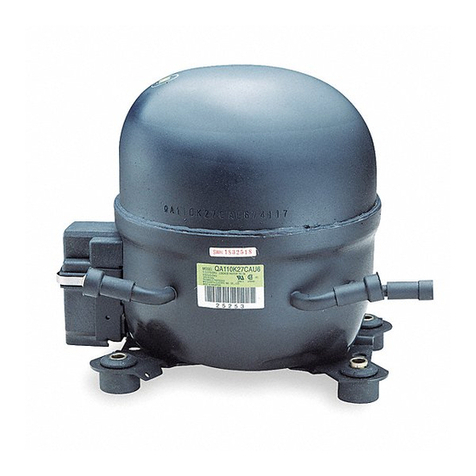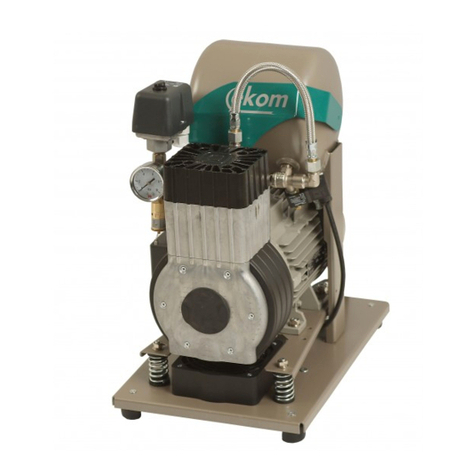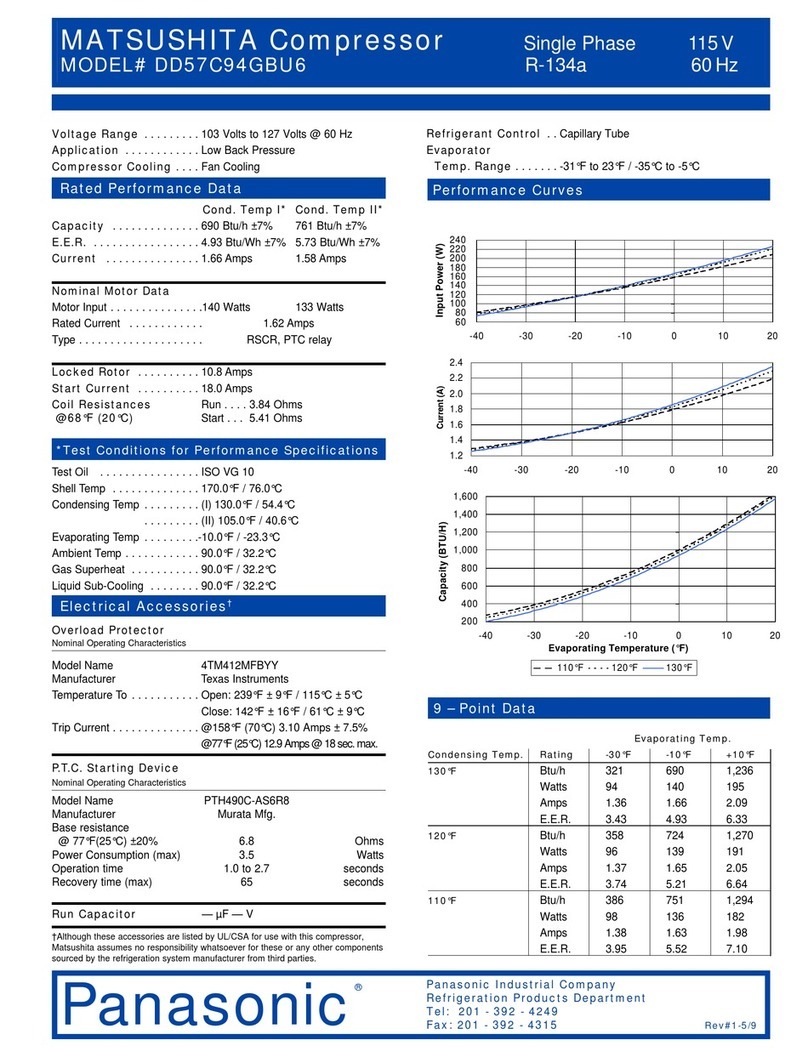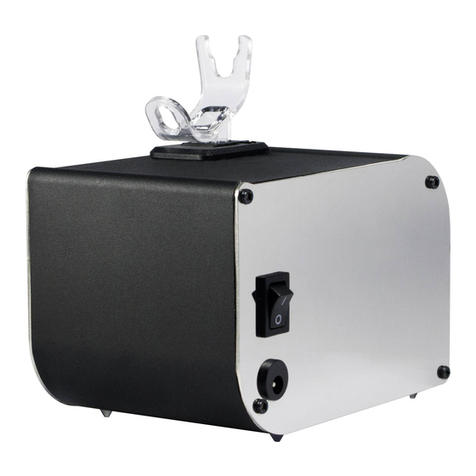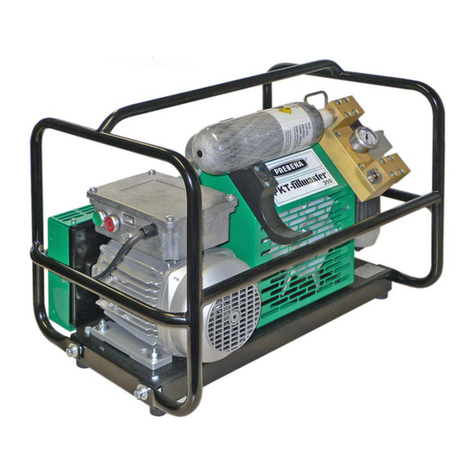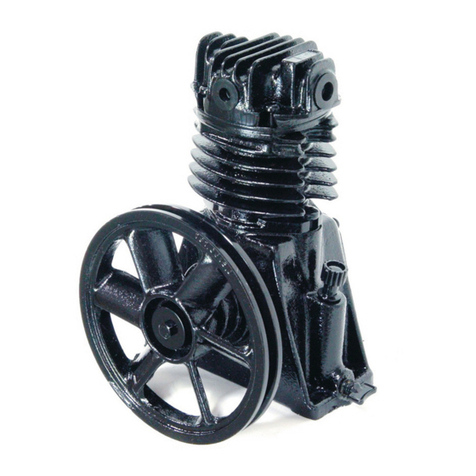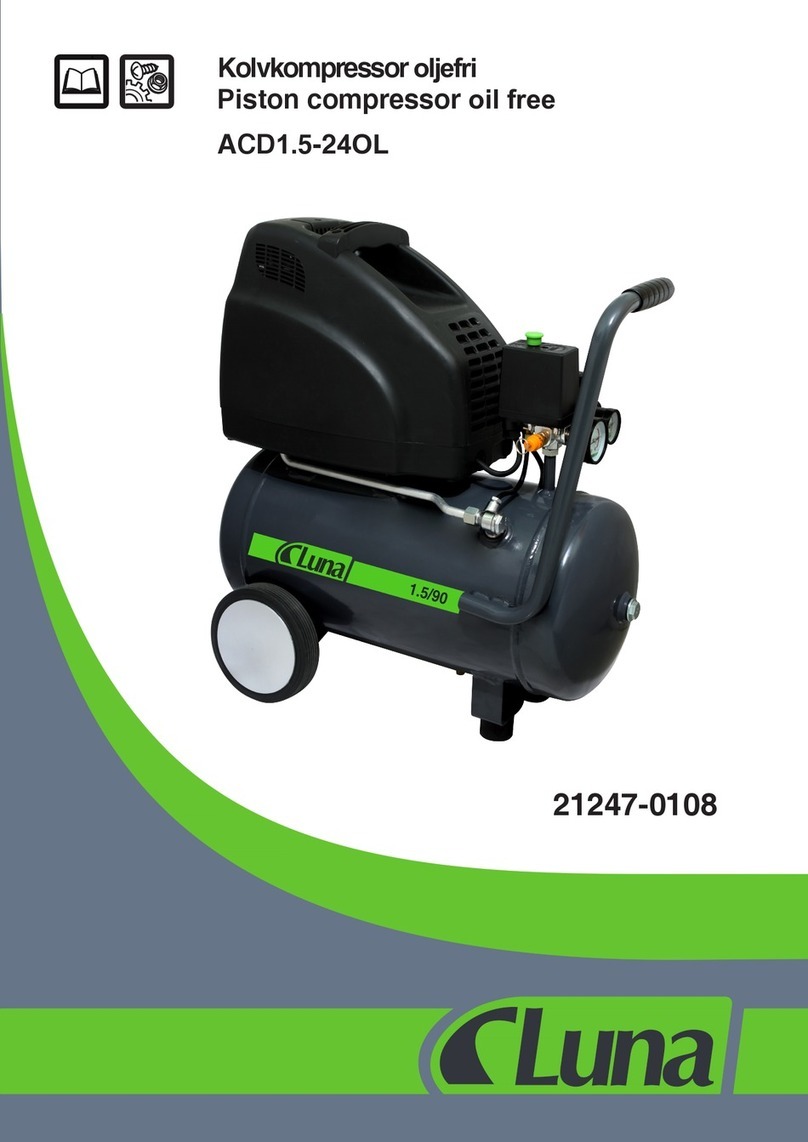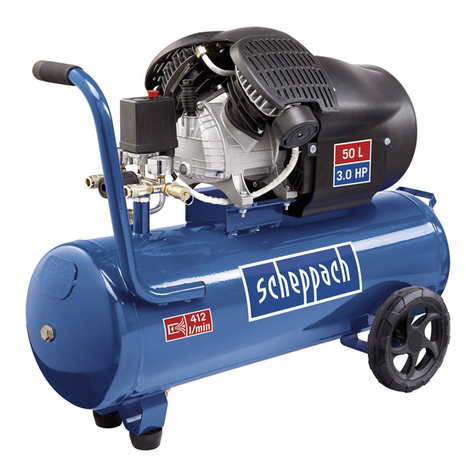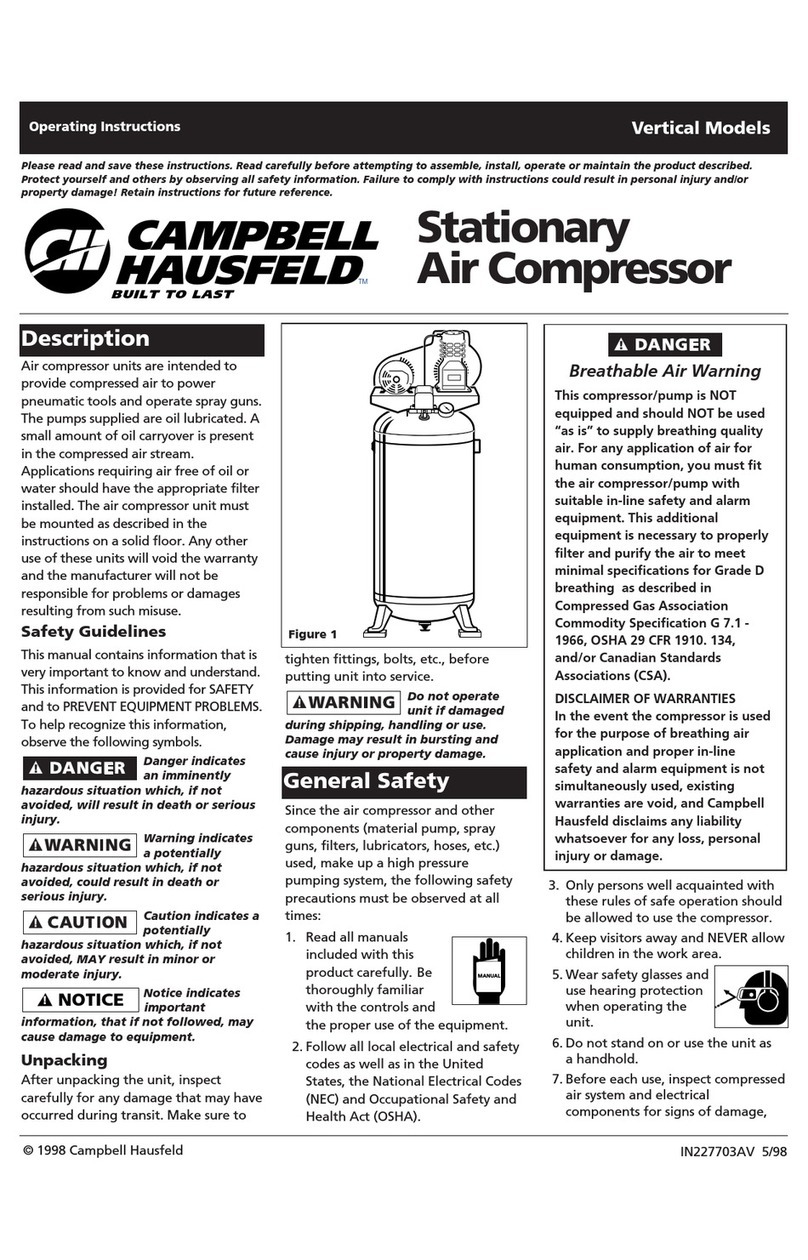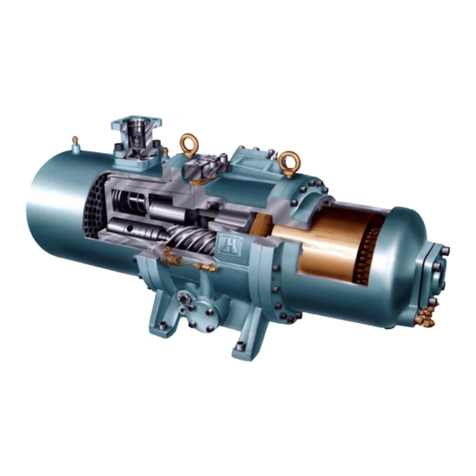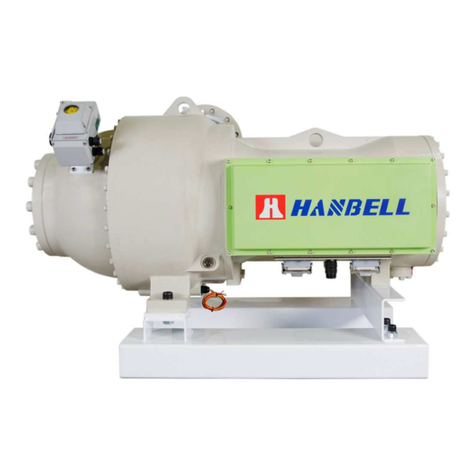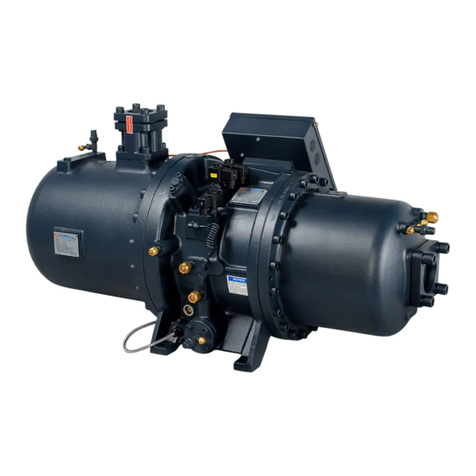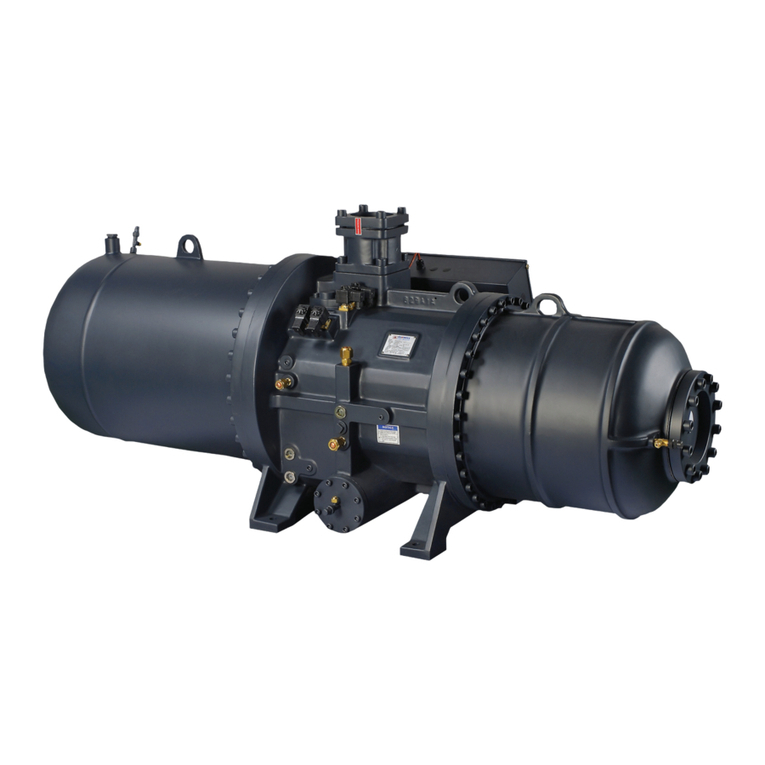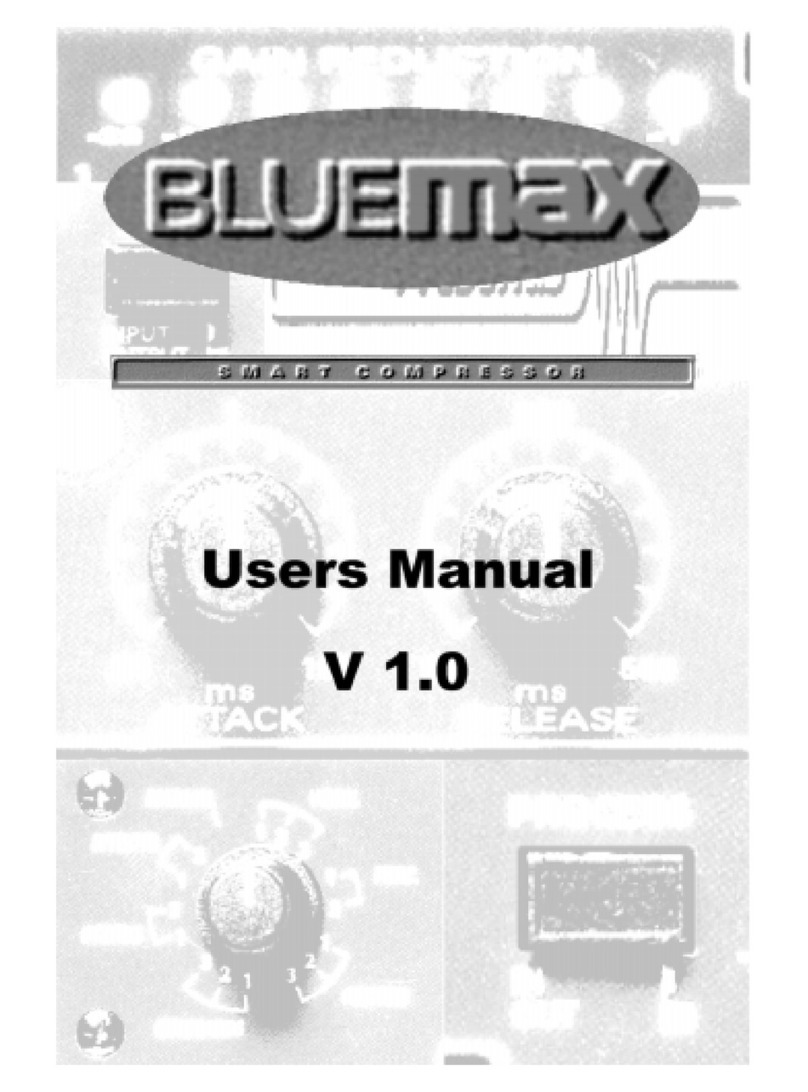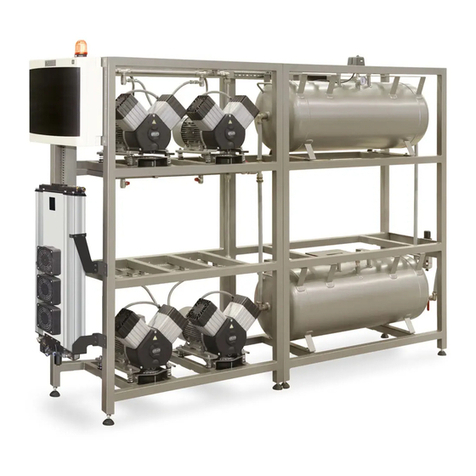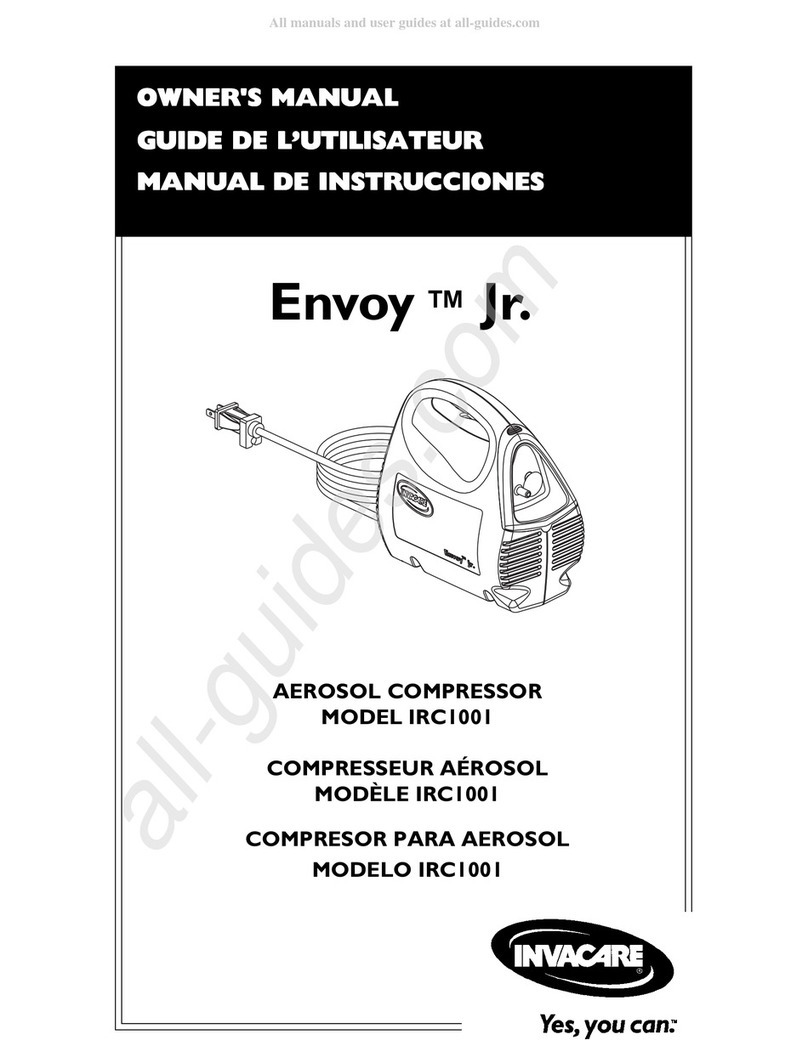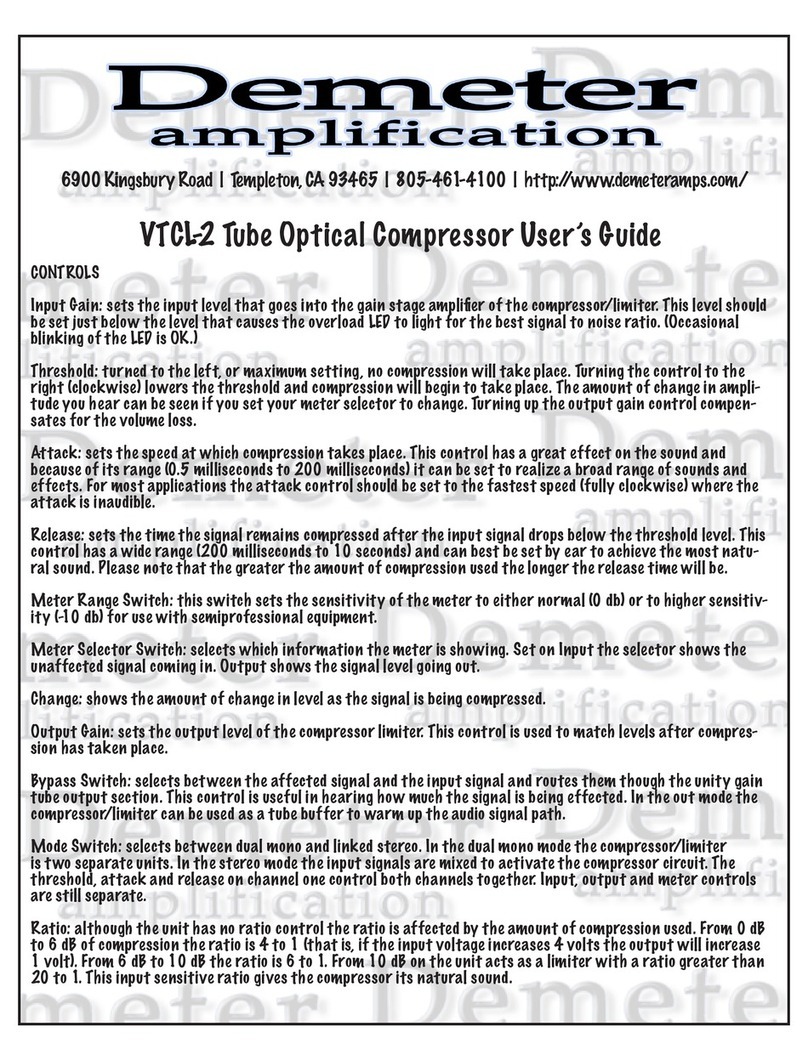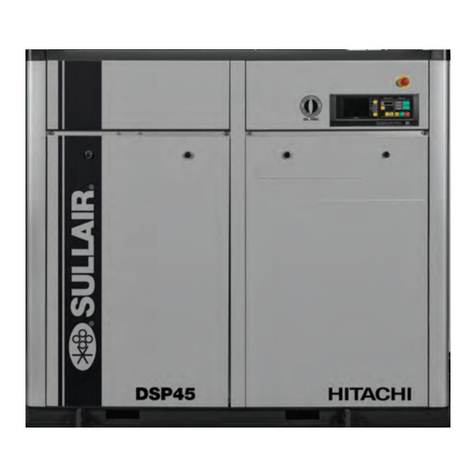
8
V
Pd
Pd'
V
Pd<Pd'
P
Pd, Pd'
V
Pd=Pd'
P
Pd>Pd'
Pd'
Pd
P
prevent interference.
9. To prevent reverse rotation caused by incorrect wiring, inspect high/low pressures by pressure switches or
programming in commissioning.
10. High/low pressure differential of compressor should be kept above 4kg/cm
2
, especially at low rotation speed. If
there is external oil circuit, oil flow switch should be installed and oil pressure in the main oil return line should be
monitored to ensure adequate lubrication of compressor.
11. If high/low pressure differential or oil pressure in the main oil return line can’t be ensured, an oil pump or pressure
regulation valve must be installed.
2.7 Capacity control system
Although RC2-V series is similar to the RC2 series, the mechanism of capacity modulation has been changed from
slide valve into variation of motor rotation speed. Compared to modulating by slide valve, varying rotation speed
through VFD can greatly enhance effectiveness of compression, and especially volume efficiency under partial load.
On the other hand, VFD can supply motor adequate voltage and power input according to target rotation speed; in this
way, variation in power input during capacity modulation becomes more linear so it reduces unnecessary power loss.
As a result, capacity modulation by VFD is superior than by slide valve in volume efficiency and power consumption.
Capacity modulation by VFD is similar to step-less capacity modulation by slide valve. As long as VFD receives analog
signals e.g. DC 0~10V or 4~20mA from PLC or microcontroller, it directs the compressor to run at corresponding
rotation speed proportionally to achieve capacity modulation.
To have PLC or microcontroller control VFD stably, pay attention to the following notes:
1. Wiring for analog signals should be well-insulated to prevent interference and noise.
2. Wiring for signals connected to VFD should be isolated from wirings of VFD power supply at a distance.
3. PLC, microcontroller and VFD should be well-grounded respectively to prevent cross interference.
Procedures for initial setting are as follows:
1. When completing VFD setting, remove wiring of VFD power output, and check if VFD’s output frequency and
corresponding voltage comply with output signal of PLC or microcontroller, e.g. for DC 0~10V with 380V/3P/70Hz
motor, when analog signal is 10V, VFD output should be 70Hz and 380V; when analog signal is 7.14V, VFD output
should be 50Hz and 272V and so on.
2. VFD output current can’t be verified without any load but its frequency and output voltage still can be registered by
VFD display. VFD output voltage is not normal A/C voltage so it can’t be measured by general clamp meter.
3. In addition to analog signals, other communication between microcontroller and VFD should be checked also, such
as VFD failure feedback or reset command, etc…
2.8 Compressor volume ratio (Vi)
The volume ratio (Vi) of the compressor can be defined as the ratio of suction volume to discharge volume in the
compressor. The smaller the concavity of slide valve in the discharge end, the larger the volume ratio. The volume ratio
directly affects the internal compression ratio (Pi). Low Vi corresponds to low Pi and high Vi corresponds to high Pi. In
the equation below, in order to prevent over or under compression, the system compression ratio (CR) should be equal
to compressor’s internal compression ratio (Pi). Please refer to P-V (pressure – volume) diagram below to figure out
this relation.
CR = Pd/Ps
Pi = Vi
k
Vi = Vs/Vd
Figure 7 P-V Diagram
Where:
CR: system compression ratio Pi: internal compression ratio
Vi: internal volume ratio Pd: system pressure (absolute pressure)
Pd’: discharge pressure (absolute pressure) Ps: suction pressure (absolute pressure)
Vs: suction volume Vd: discharge volume K: refrigerant specific heat ratio
Under compression (CR > Pi)
Loss of work Loss of work
1 2
3
4
Ps
1 2
3
4
Ps
Ps
1
2
3
4
